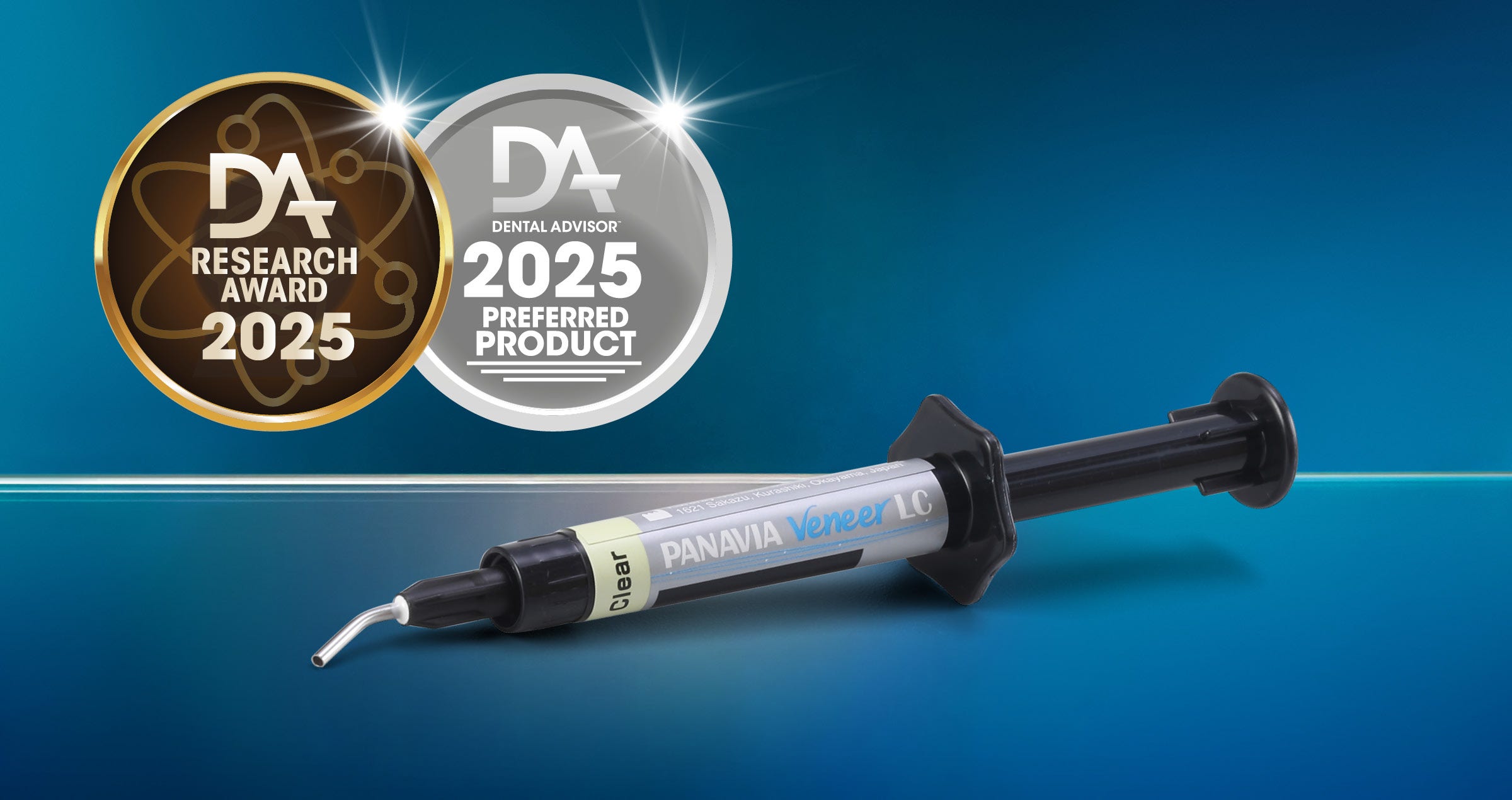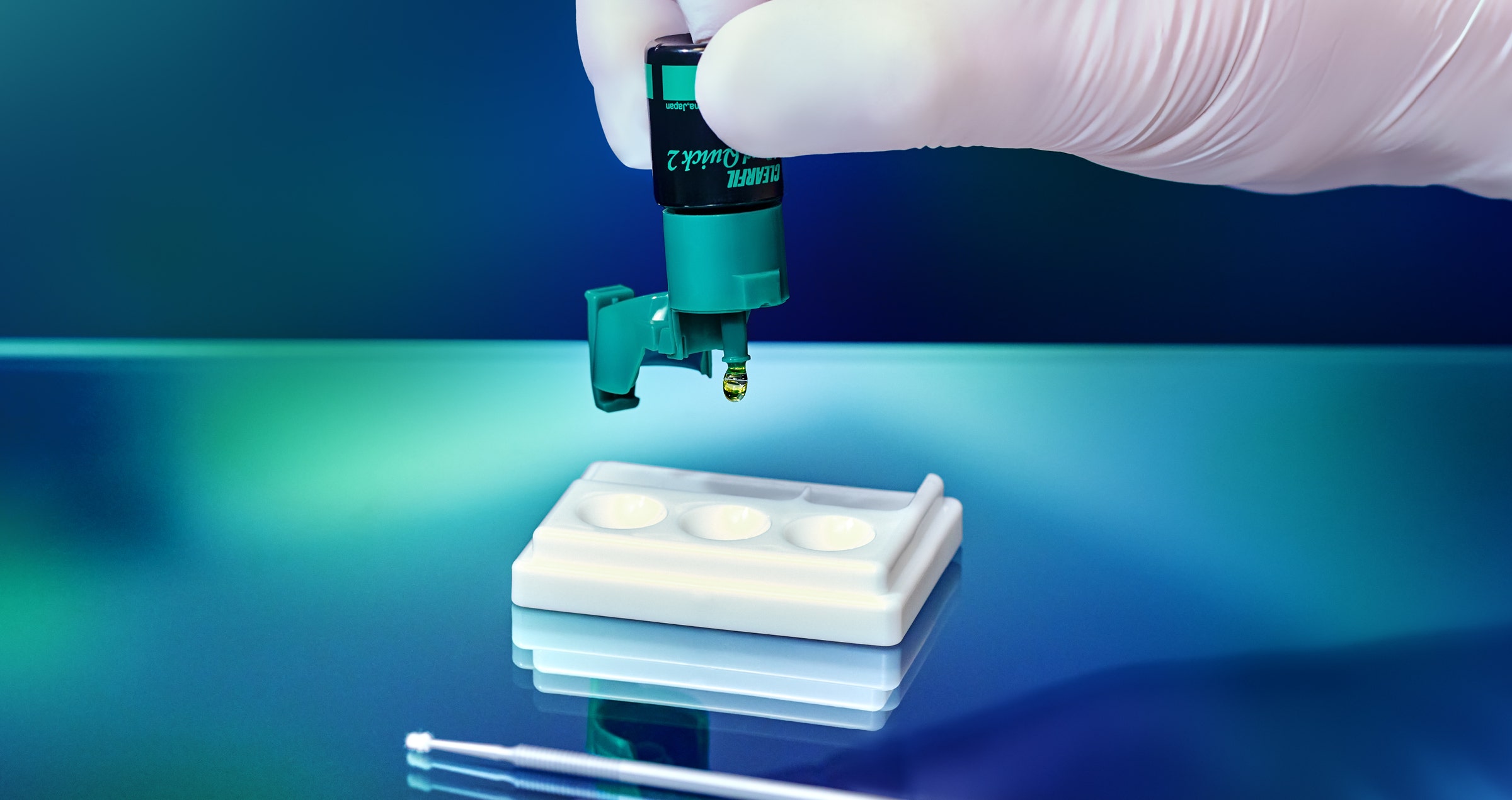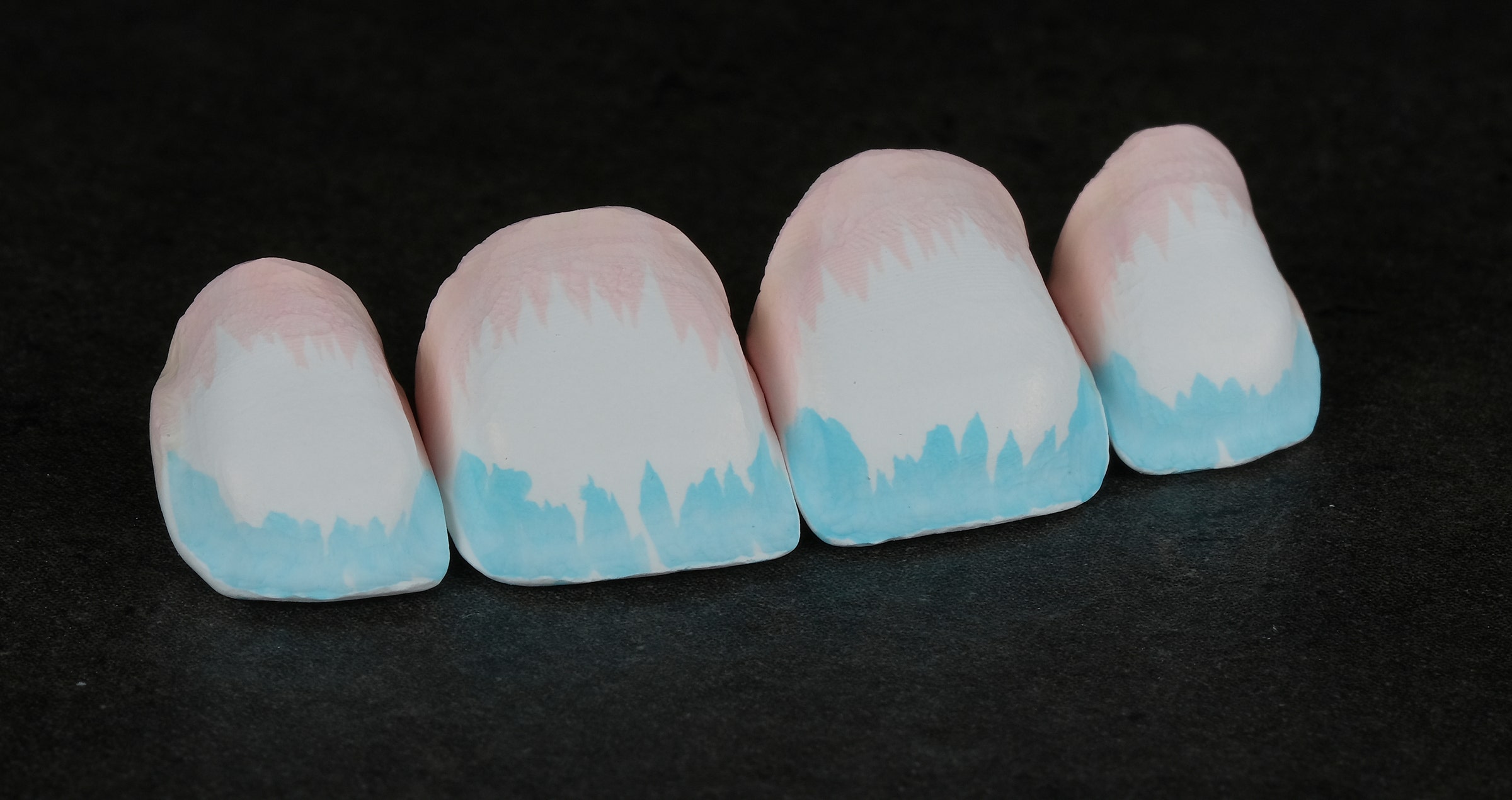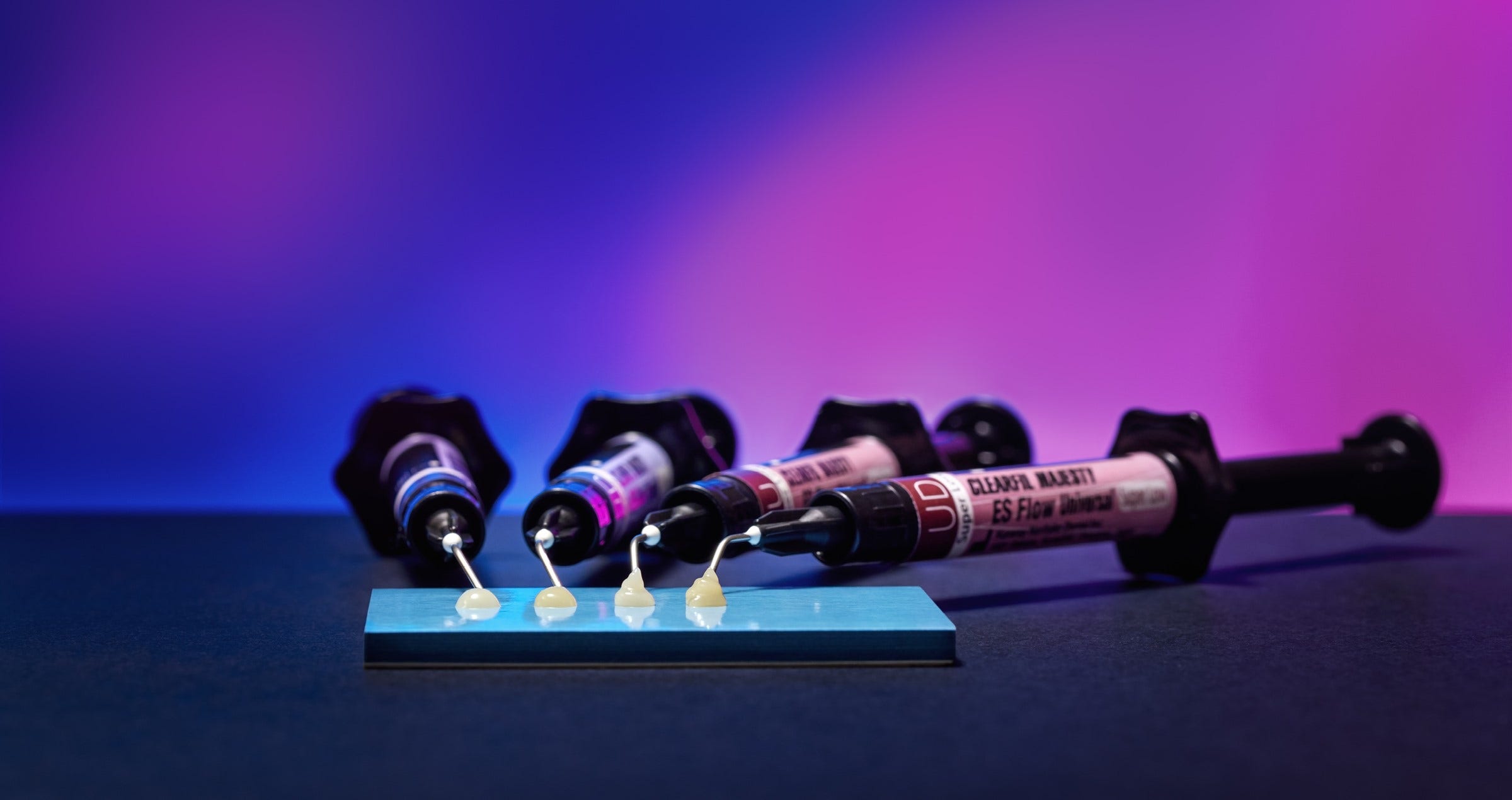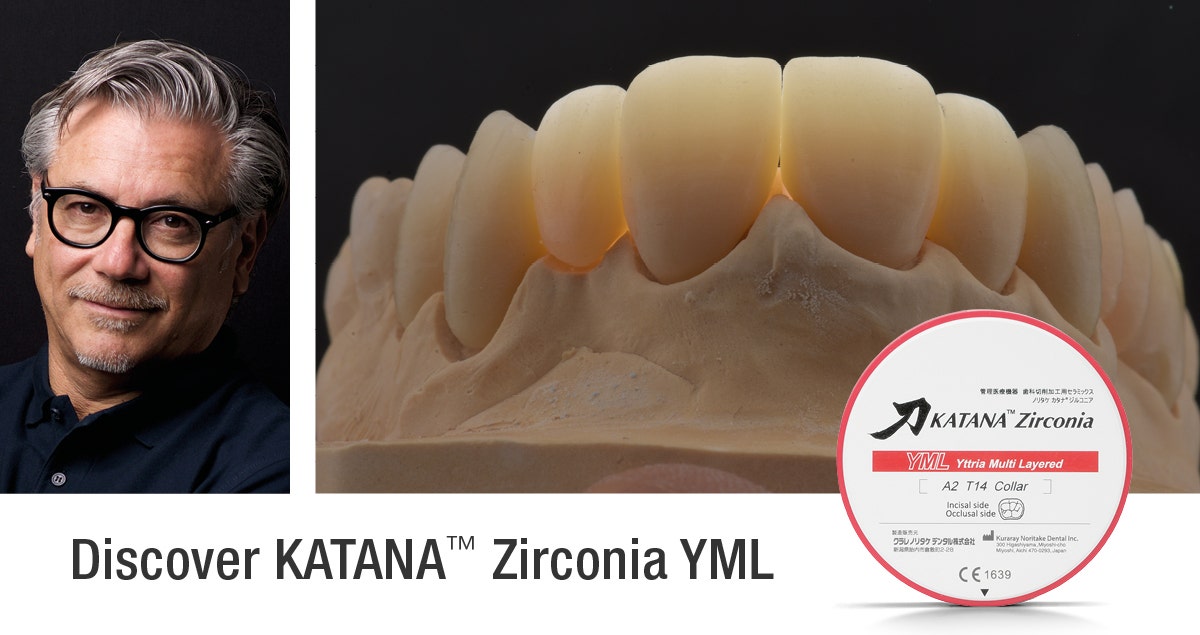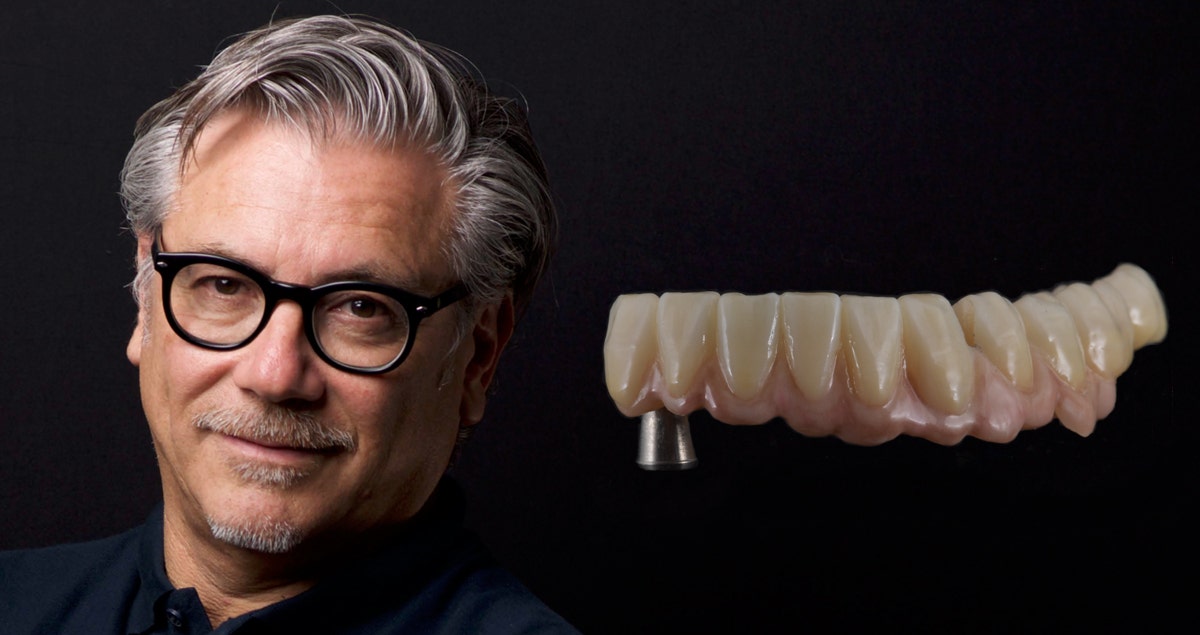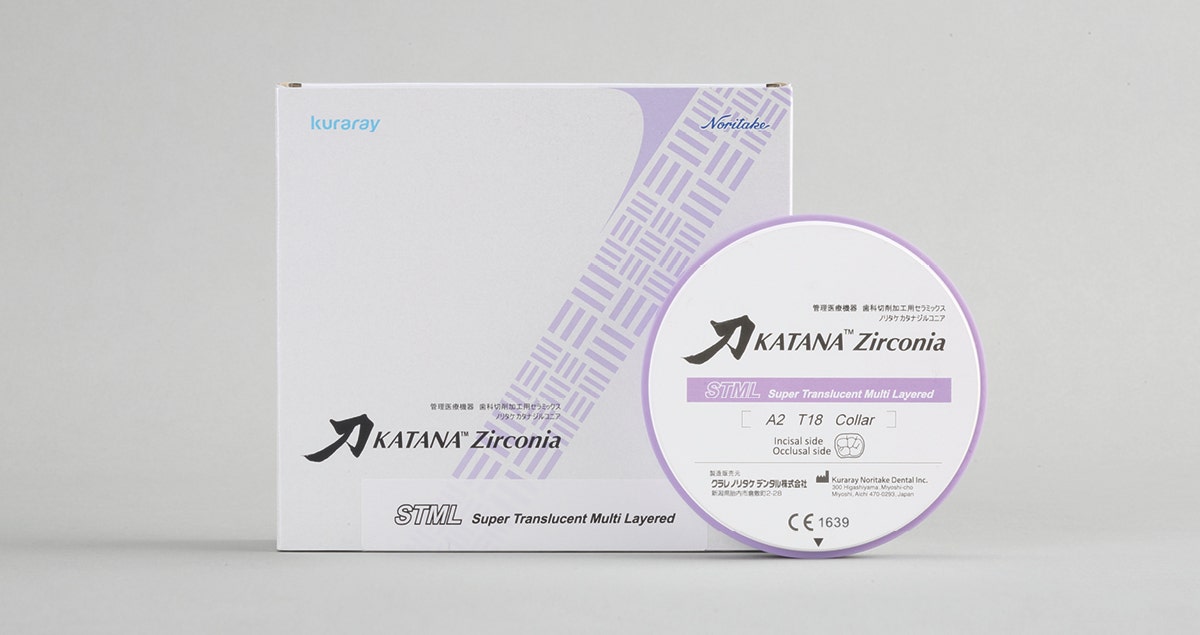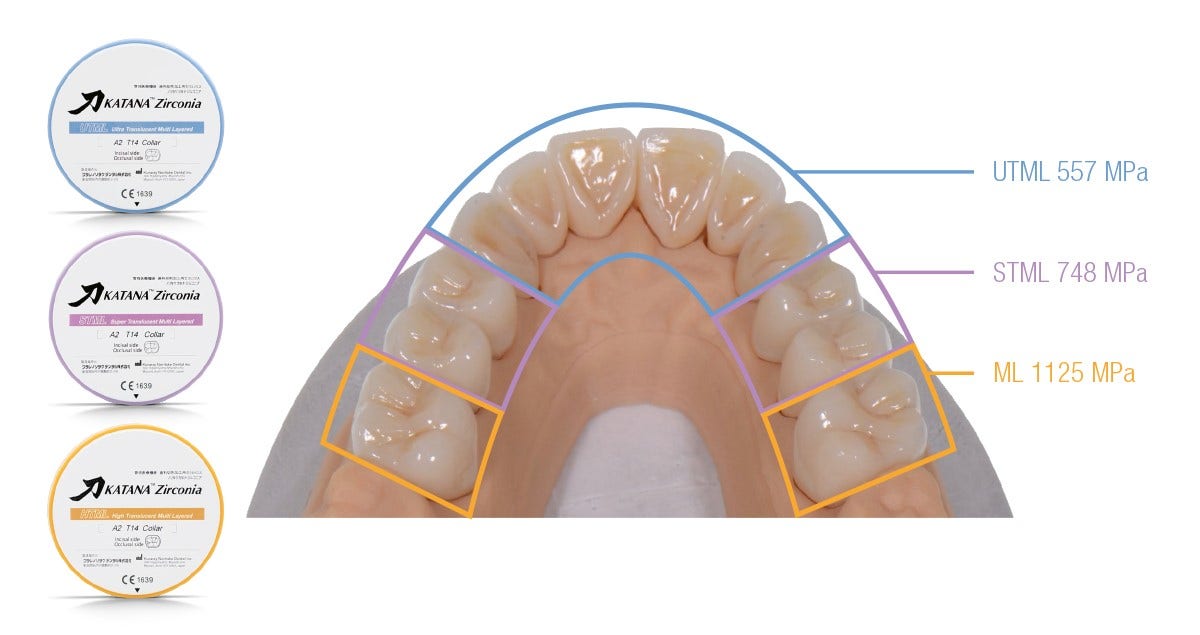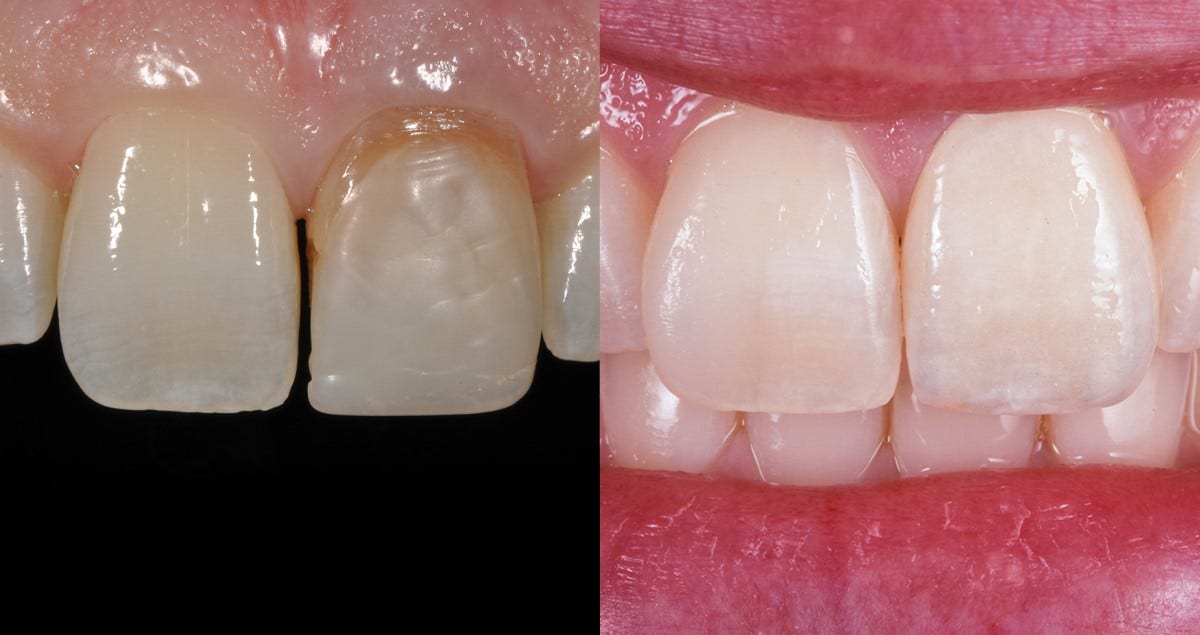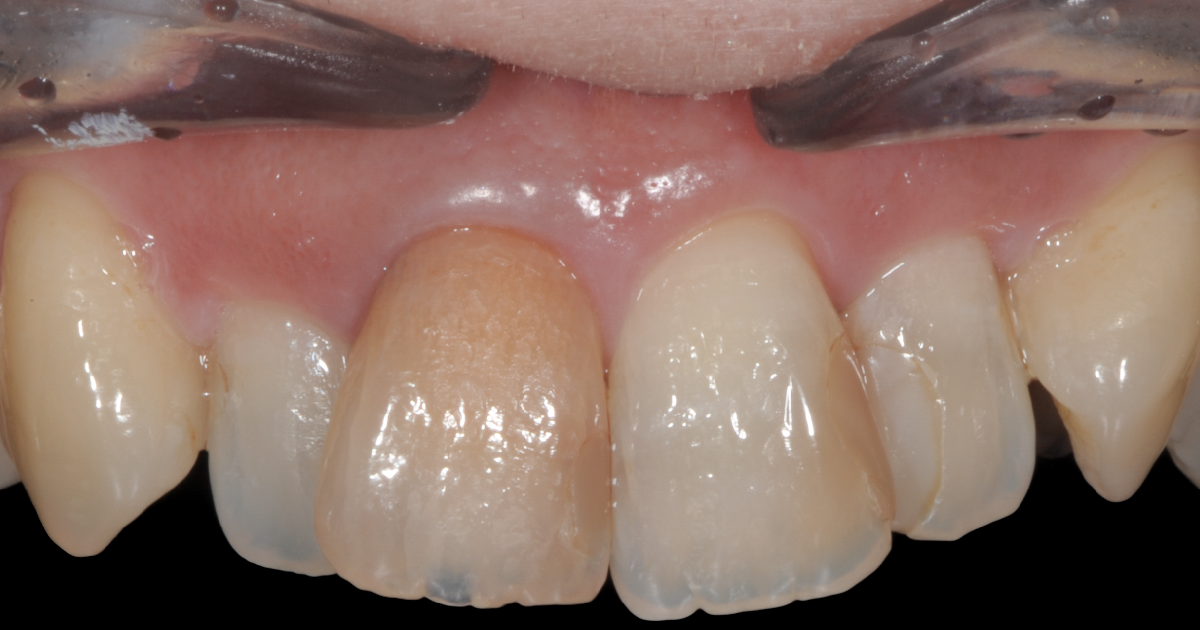Case by Francesco Ferretti and Marco Nicastro
Aesthetic restoration of anterior teeth using KATANA™ UTML Full anatomical crowns, with vestibular stratification and BOPT*1.
*1 Biologically Oriented Preparation Technique
Initial situation
Final result
Shows excellent aesthetic properties of KATANA™ UTML and the perfect integration in harmony with pink tissues.
Figure 1. The patient requested a solution for an aesthetic problem due to unnatural look of old restorations and black triangles coming from past history of periodontitis. The resulting retraction of the tissues had left the margins of the prosthesis clearly visible, and the loss of the papilla peaks, together with the numerous black spaces between the crowns, required a complex therapeutic approach.
Figure 2. The treatment plan for the periodontal problems con-sisted of a non-surgical approach, with scaling and root planing, and the replacement of the previously fixed prostheses to recondition the marginal tissues and facilitate the restoration of a new, aesthetically pleasing gingival architecture.
Figure 3. From a functional point of view, we decided to reduce the deep frontal bite to restore a correct overjet-overbite ratio. This reduction was also important from an aesthetic point of view, as it allowed us to shape the various elements correctly.
Figure 4. We usually remove old prostheses before beginning a periodontal treatment, and make a first, provisional restoration to create an environment in which the soft tissues can heal. If we have to work beyond the cement enamel joint (CEJ), we prefer a vertical preparation for posts, and the purpose of the provisional restoration is to condition the marginal tissues using Dr. Loi’s BOPT.
Figure 5. For the BOPT, the vertical preparation of the post has a finish line that extends inside the gingival sulcus. The temporary conditioning of the tissues induced by the provisional prosthesis allows us to modify the level of the gingival parables to a certain extent.
Figure 6. The image on the left shows the clinical healing of the tissues one month after the initial periodontal treatment. The role of the provisional restoration, appropriately realigned, is clear. The conditioning of the tissue has been achieved by means of the provisional restoration, which has modified the level and shape of the marginal tissue. Once filled with correctly fitted crowns, the interproximal spaces will be further reduced after the definitive restoration.
Figure 7. The correct management of the provisional restoration is crucial for the healing of the tissues. The placement of a provisional restoration before the periodontal therapy has allowed us to create the right environment for complete healing. At the same time, the vertical preparation has allowed us to gradually condition the marginal gingival tissue by shortening or lengthening the provisional restoration as necessary.
Figure 8. One of the advantages of a vertical preparation is that taking the final impression is easy, because the absence of a horizontal finish line greatly simplifies the procedure. On the other hand, the BOPT also requires the taking of an impression of the sub-gingival portion of the preparation. The dental technician will have to decide marginal shape of restorations according to the position of the gingival line in consultation of the clinician, and based on the tests conducted with the provisional restoration.
Figure 9. After the casting of the model, we prepared the gingival area to accommodate an ideal configuration of gingival parables.
Figure 10. After making a wax model, we assessed whether the height of the gingival zenith level could be further corrected. This photo shows that gingival level of 21 was not yet ideal, so we stretched it distally.
Figure 11. Once the wax model was complete, we extracted the element from the model and evaluated its protrusion. It was only after joining the gingival protrusion to the arbitrary margin of the preparation that we proceeded to a scan and milled the crowns.
Figure 12. The restoration was carried out with Katana™ UTML zirconia based on the new formulation of cubic zirconium oxide. This ultra tralucent material was chosen because we were working with light and non-discolored posts.
Figure 13. We finished the crowns on a positional impression to help to improve the gingival adaptation; we had some dispersion of the tissues in the first precision impression due to the use of retractors. We finished the crowns with CZR FC Paste Stain colours and glaze.
Figure 14. The surface colours and the slight contrast created are highlighted in this black-and-white image taken with a blue filter.
Figure 15. In this translucent image, we can see the natural translucent effect of KATANA™ UTML and invisible fusion between abutments and crowns.
Figure 16. Clinical image one year after cementation made with PANAVIA V5; this shows the good clinical condition of the marginal tissue, with no signs of inflammation or bleeding. The BOPT allowed us to optimise the level of the gingiva without resorting to periodontal surgery, while the shape of the new crowns has made it possible to close all interproximal spaces for an optimally aesthetic result.
Figure 17. The brightness of the restorations (thanks to the use of a particularly translucent zirconia) combined with the shape of the incisors, has greatly im-proved the aesthetic of the restoration, even though the condition initially appeared to be particularly unfavourable.
Figure 18. Compared to the previous prostheses, the incisal reduction allowed not only for the optimisation of the functional phase by reducing the overbite, but also made it possible to achieve a more natural aesthetic, with the contour of the incisal margins following that of the lower lip.
Dentists:
FRANCESCO FERRETTI
Born in Rome on 15th March 1957, Francesco Ferretti gets his degree as dental technician at the Institute “Edmondo de Amicis”, in Rome. In 1980, he starts working and, from 1987 to 1994, he cooperates with IVOCLAR VIVADENT giving consulting as ceramist. In 1992 he starts working exclusively with Prof. Mario MARTIGNONI.
- After one year cooperation with Prof. Martignoni, he starts working with the ORAL DESIGN CENTER founded in Rome by Mr. Willi Geller, and becomes a partner, improving prosthesis esthetics.
- Is registered outside the course of dentistry at the University of Rome Tor Vergata.
- In 2001, he founds ESTECH DENTAL STUDIOS, in cooperation with Pentron for technical training and consulting.
- He has published articles and studies in Italian and American magazines. He is interested in Metal Free techniques.
- Winner of the 2004 Polcan Aiop.
- He is a member of: ANTLO LAZIO ( National Association of Lab Owners) with the president of the Lazio region 2013-2014.
- National cultural manager ANTLO 2017-2020.
- Teacher of prosthetics perfectioning at the University of Chieti for the year 2002, he has been re-confirmed for the year 2003, 2004, 2005 to deal with Metal Free.
- Teacher of prosthetics perfectioning at the University of Naples 2006.
- He has participated as a speaker at numerous conferences in Italy. ESCD member has participated as a speaker at ten in Florence 2009 and Turin 2013.
MARCO NICASTRO
Marco Nicastro takes a degree in “Odontoiatria e Protesi Dentaria (Dentistry and Dental Prosthesis) at the University of Rome “ La Sapienza in 1989. Since the beginning he is interested in prosthesis restoration dentistry and aesthetic problems.
- From 1990 to 1996 he attends Prof. Martignoni’s studio, where he develops his prosthesis knowledge.
- From 1993 to 1998 he cooperates as lecturer with the Oral Design Centre in Rome, directed by Mr. Ferretti and Mr. Felli, giving lectures and courses about aesthetic restoration either in Italy or in foreign countries. In the same period he enlarges his experience in aesthetics, attending training courses at the University of Geneva, in Switzerland.
- Since 1993 he has been cooperating with Mr. Francesco Ferretti in the organization of Courses and Conferences, paying particular attention to metal free methodology.
- Vice President of the European Society of Cosmetic Dentistry (ESCD).
- Founding member and active member of Gimnasium interdisciplinary CAD-CAM (GICC).
- Active member of the Italian Society of Conservative Dentistry (SIDOC).
- Partner of the Italian Academy of Prosthetic Dentistry (AIOP).
- President of Like Mine Dental Education in Rome since 2001.
- He won, with Francesco Ferretti, the Polcan award of the Italian Accademy of Prosthetic Dentistry in 2004.


